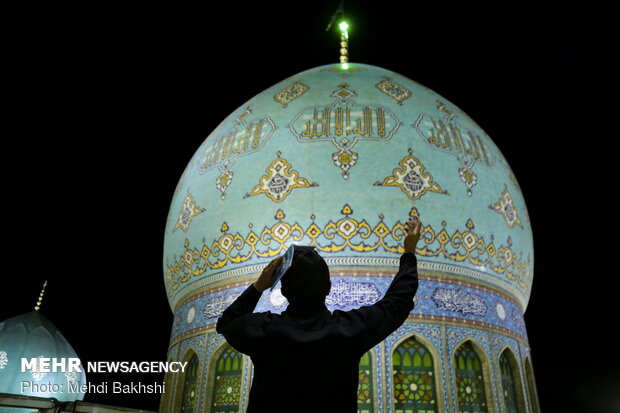
Ramadan is the ninth month of the Islamic lunar calendar and the month in which Muslims believe the Quran was revealed. Fasting during the month of Ramadan is one of the Five Pillars of Islam.
The month is spent by Muslims fasting during the daylight hours from dawn to sunset. Muslims believe that the Quran was sent down to the lowest heaven during this month, thus being prepared for gradual revelation by Jibraeel (Gabriel) to Islam’s Prophet Muhammad (PBUH). The first day of the next month, Shawwal is spent in celebration and is observed as the “Festival of Breaking Fast” or Eid al-Fitr.
Since the new moon is not in the same state at the same time globally, the beginning and ending dates of Ramadan depend on what lunar sightings are received in each respective location. As a result, Ramadan dates vary in different countries, but usually only by a day. This is due to the cycle of the moon. The moon travels the same path all year round and when the moon is seen in the east, it is then seen traveling towards the west. All the countries around the world see the moon within a 24 hour period once spotted by one country in the east.
Each year, Ramadan begins about eleven days earlier than in the previous year. Astronomical projections that approximate the start of Ramadan are available. It takes about 33 years and five days for Ramadan to complete a twelve-month move across the yearly calendar.
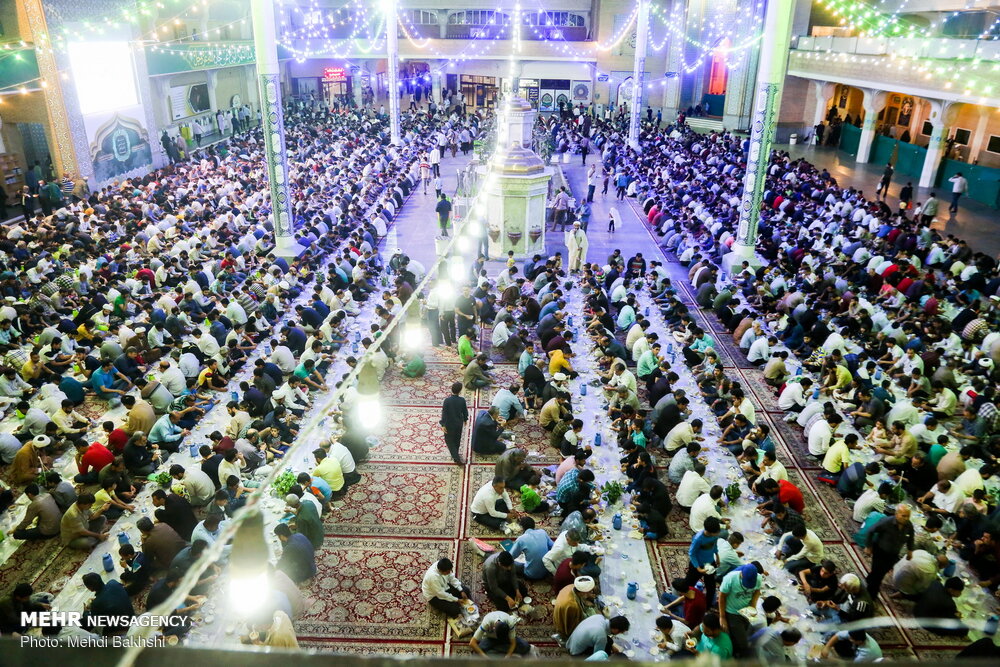
The holy month of Ramadan has a special place in Iranian culture. The atmosphere in cities often changes with the start of Ramadan. Streets and shops are covered with colourful lights and floral patterns.
People (particularly the older generation) greet one another by saying “Ramadan Mubarak”, which means “Happy Ramadan”.
In Ramadan, people rise early before dawn to have a pre-fast breakfast, called ‘Sahari’ in Persian. The meal is usually light and normally consists of previously prepared foods. The more elaborate meal comes at the end of the fasting day called ‘Iftar’. Iftar, if possible, is consumed with other close members of the family clan, friends and neighbors.
Fasting takes places between Sahari and Iftar. No eating is allowed in public during fasting hours (sunrise to sunset), so those who don’t fast (including non-Muslims) can only indulge themselves in private.
Mosques become more active during the holy month of Ramadan. Volunteers who perform acts of charity, distribute food and Iftar in mosques to people as a votive.
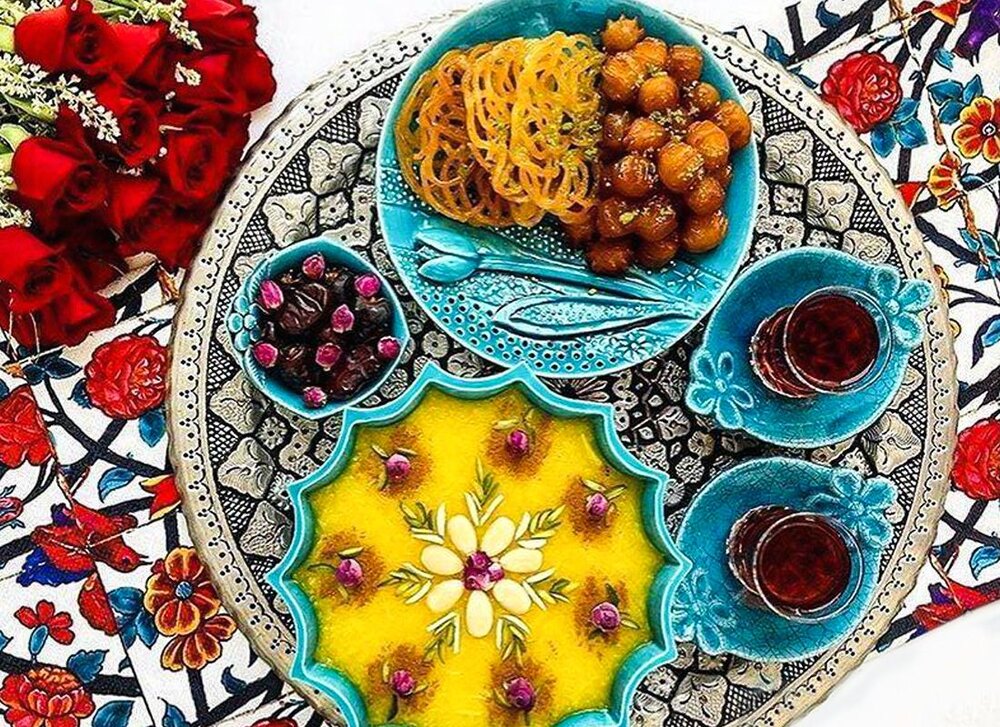
A variety of foods and pastries are served during Ramadan months, however, limited opening hours are currently upon us due to the ongoing COVID-19 situation.
Although there is no prescribed food for the meals, Iranians have some unique cuisines some of which you may not find in other months of the year.
Zoolbia Bamieh – is a crispy Persian doughnut, made of deep-fried dough drunk in tasty syrup. Crispy on the outside, soft on the inside, these little sweets are always dripping with sweet saffron syrup.
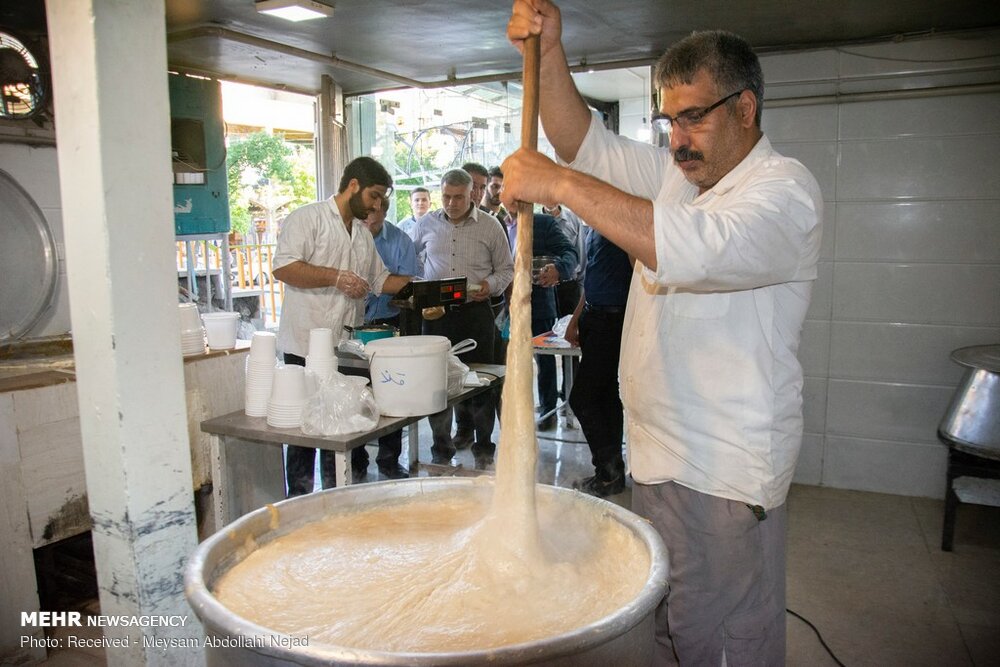
Halim – is a very popular food in the Middle East. It is made of barley, shredded meat (beef, lamb, chicken or turkey) and spices. This dish is cooked for several hours, which results in a paste-like consistency, blending the flavors of spices, meat, barley, and wheat.
Ash Reshteh – is one of the best traditional Persian stews. Think of it as not a stew but a heavy mixture of vegetables, fried onion, meat, nuts, beans, Persian noodle, and lots of other things.
Sholezard – is an Iranian traditional saffron rice pudding dessert. Sholezard is made of rice cooked with water and is flavored with saffron, sugar, rose water, butter, cinnamon and cardamom. It is typically decorated with cinnamon, almonds, rosebuds and pistachios.

There are numerous religious rituals people observe during Ramadan.
Communal praying, recitations of the Quran, and preaching by religious figures and other respected authorities are among other ceremonies held during this month.
The last 10 days are especially important because the Quran was revealed this month at the Night of Decree (Laylat al-Qadr)
According to the Quran, the Night of Decree is better than a thousand months put together. Some people will retreat into prayers during these last ten days. These are called days of i-tikaf or retreat and it ends with the festival Id-i Fitr.
All mosques, as well as the holy shrines, across Iran host the people who want to take part in i-tikaf. They are provided with pre-fast breakfast and Iftar. Many people stay in mosques for three days to perform their religious rituals.

The 19th and 21st of Ramadan, the days of the assassination and martyrdom of Imam Ali – the first Shia Imam – are mourned by Iranians throughout the country. Over these nights, many religious groups start their memorial ceremonies to pay their respects to Imam Ali and mourn his brutal assassination.
People stay up all night reciting special prayers and at times will hold the Quran on their heads while praying.
Religious rituals take place all over the country which makes Ramadan in Iran more unique and memorable. Thousands of Black-clad chest-beating local participants swarm the cities of Iran during the 21st of Ramadan, while religious street theaters, free food givers, and traditional Persian drinks (lemonade-like) on tables decorate the streets of every city.
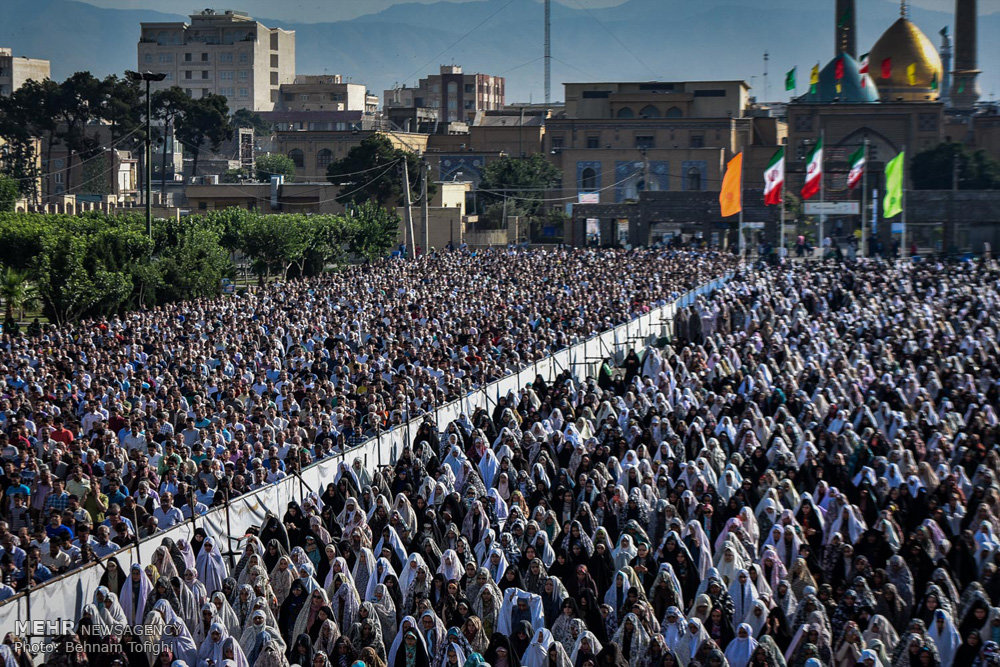
Eid al-Fitr marks the new lunar month of Shawwal and the end of Ramadan. The occasion is celebrated with a great feast. The feast of breaking the fast comes with a solemn prayer, called Salat al-Eid.
Most people will attend their local mosques for communal prayers. The last feast or Iftar is more elaborate and is quite often joined by family, friends and neighbors.
The prayers are usually led by prominent religious figures and Marja’s.







